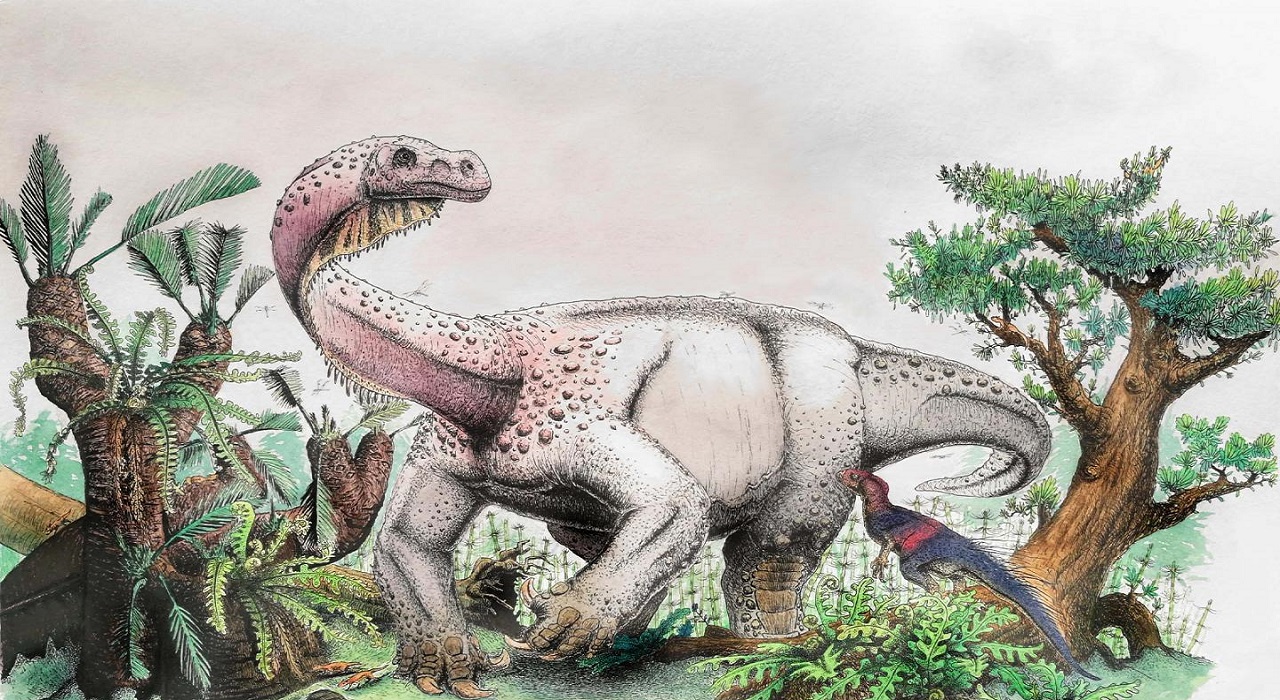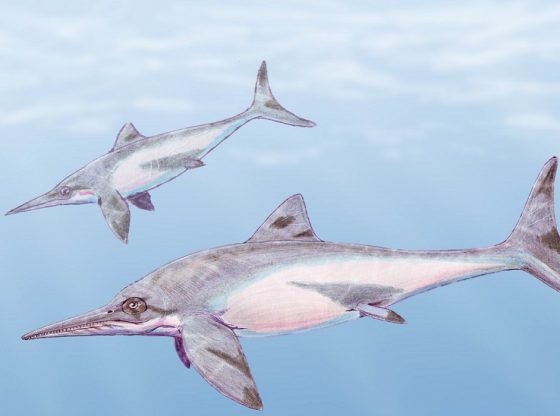
A new species of a giant, plant-eating dinosaur has been found in South Africa’s Free State Province, and described by a team of international researchers in Current Biology.
Ledumahadi mafube, which means “a giant thunderclap at dawn,” in the South African language Sesotho, walked in an unusual way. It did not walk on straight limbs, but rather with a “crouched” stance, causing scientists to believe L. mafube was an “evolutionary ‘experiment’.”
At a weight of 12 tonnes, and standing roughly four meters tall at the hips, the researchers estimate the dinosaur was about double the size of a large African elephant.
It lived 200 million years ago in what is now southern Africa. The animal is an early member of the group that includes the giant sauropod dinosaurs. But technically Ledumahadi is an earlier, more distant cousin called a sauropodomorph. It is a much bigger animal living much earlier in the age of dinosaurs than researchers normally expect to see
The scientists believe that it is a transitional dinosaur — the product of an evolutionary quirk that had yet to fully express itself. It walked on its back legs. But it was so heavy it had begun to morph its forelimbs into a stockier build in order to help it support its body.
“Ledumahadi mafube was the largest land animal to have ever existed at the time it lived in the earliest Jurassic,”
– The researchers report.
Sauropods were the dominant plant-eating animal on Earth for 135 million years, and it is generally believed their success was due to their enormous size and ability to walk on all fours.











![OpenAI. (2025). ChatGPT [Large language model]. https://chatgpt.com](https://www.illustratedcuriosity.com/files/media/55136/b1b0b614-5b72-486c-901d-ff244549d67a-350x260.webp)
![OpenAI. (2025). ChatGPT [Large language model]. https://chatgpt.com](https://www.illustratedcuriosity.com/files/media/55124/79bc18fa-f616-4951-856f-cc724ad5d497-350x260.webp)
![OpenAI. (2025). ChatGPT [Large language model]. https://chatgpt.com](https://www.illustratedcuriosity.com/files/media/55099/2638a982-b4de-4913-8a1c-1479df352bf3-350x260.webp)








